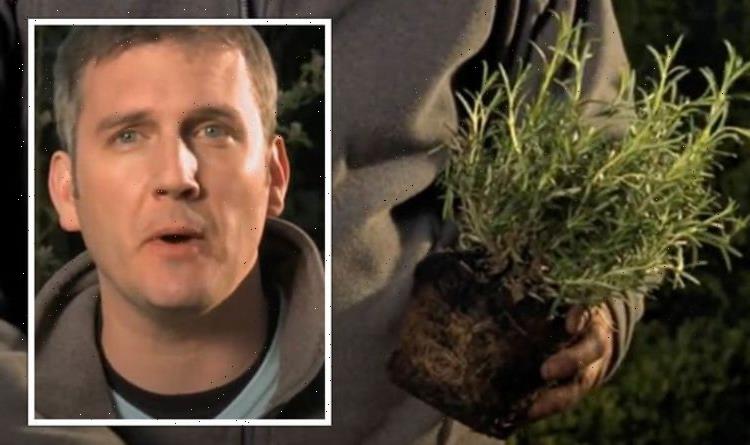B&Q offer advice on how to plant herbs in a container
We use your sign-up to provide content in ways you’ve consented to and to improve our understanding of you. This may include adverts from us and 3rd parties based on our understanding. You can unsubscribe at any time. More info
Herbs are the perfect accompaniment to a plethora of summer dishes. While it may be a bit late to sow herb seeds, you can still buy herb plants in containers. Gardening expert Matt James explained how to grow herbs and prepare your containers for them in a 2012 video for B&Q.
In the step-by-step video, Matt explained which compost and container you should use, and what herbs you can plant.
He said: “You can easily enjoy fresh pickings by growing your own herbs in containers.
“Nothing could be simpler, especially if you sight the containers near to your kitchen so that you can pick fistfuls when you’re cooking.
“There are lots to choose from. From basil through to parsley to coriander, to the perennial toughies like mint, thyme sage and of course chives.


“If you’re just starting out, I’ll go with those first.”
However, it’s important to consider where you’re planning to plant the herbs.
Some herbs prefer sunnier conditions while others may be more suited to shade.
Matt added: “Things to consider; make sure that you pick the right herbs for the particular aspect in mind so things like mint for shade and thyme, for example, for sun.
“Soil-wise they’re not really that fussy but I like to mix in, say, a 50-50 mix of John Innes number three, a soil-based compost, in with some peat-free multi-purpose.”
DON’T MISS
Mastermind quiz questions – 15 general knowledge quiz questions [INSIGHT]
Kate’s parenting style ‘immaculate’ while Pippa ‘more practical’ [UPDATE]
When to cut back fuchsia – 6 handy tips to keep a perfect garden [ANALYSIS]
The gardening expert decided to pot up a window box with herbs.
He used a brown, long box with plenty of room for a few plants.
You need to ensure that the container has drainage holes so that they don’t end up getting too wet and contracting root rot.
Matt explained further: “First thing to remember, check there are suitable drainage holes in the base because all herbs hate sitting in water for long periods.
Looking for a new home, or just fancy a look? Add your postcode below or visit InYourArea
“Add in, probably for this sort of size, about an inch or so of drainage material that could be broken terracotta crocks, terracotta chunks of broken pots in the base.
“It could be gravel or if you’re gardening up high and you’re worried about weight, you could use broken polystyrene chunks.
“I’m going to use gravel – any old gravel will do just as long as it does the job.
“Now, it’s time for the soil.”

Matt spread the soil evenly and made sure not to fill the container to the top.
He will add more soil in later once the herb plants are in the container.
Next, he decided to add a “little bit” of fertiliser.
He continued: “I’m using a controlled-release fertiliser which means that the release of nutrients is controlled over a set period.
“You get various different ones from four to six months twelve to fourteen or whatever.
“Just mixing a little sprinkling – read the instructions on the packet of course! Now it’s time for my plants.”
Source: Read Full Article
